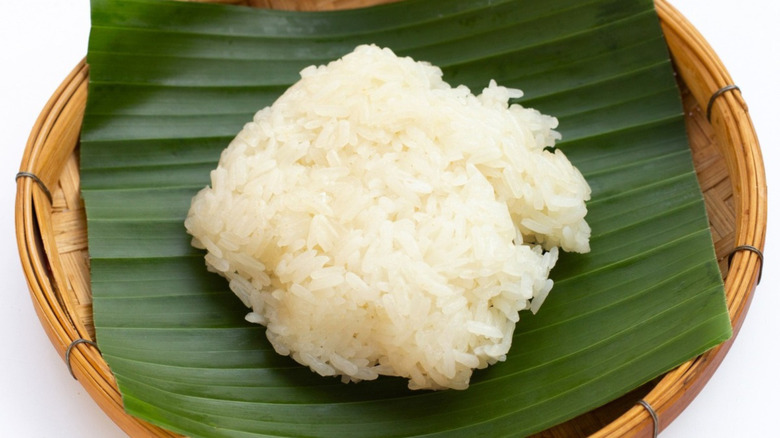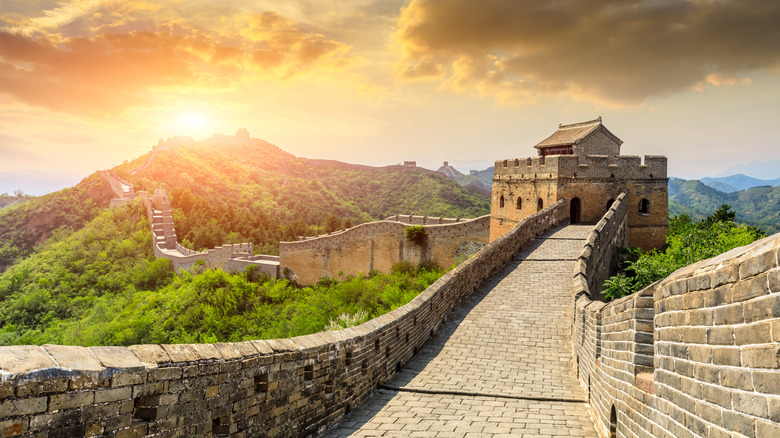How Sticky Rice Helped Build The Great Wall Of China
The Great Wall of China, winding its way through 13,000 miles of northern countryside, has remained the most iconic symbol of China for generations. Built in the Ming dynasty between the 14th and 17th centuries to defend the capital city, this Wonder of the World has withstood the test of time (per History.com). Some wall sections have since crumbled away and seen much wear and tear, but some have been reconstructed in an effort to preserve its history. After delving into the historic wall's stonework, scientists learned that the world's longest man-made structure has a secret ingredient.
Sticky rice, also known as "sweet rice," is the ultimate food staple in Asian cuisine and is the national dish of Laos. There are countless dishes that use sticky rice to hold together delicious morsels and add some texture to a meal. Used in Zongzi, most sushi rolls, and Kow Neuw Mamuang dessert, sweet rice complements just about anything and can soak up flavors like no other. But why is it fortifying the Great Wall of China instead of some hungry belly? It can't be that sticky, can it?
How is sticky rice mortar so strong?
Construction workers in ancient China created what could have been the first-ever compound mortar made from mixing sticky rice porridge, an organic material, with slaked lime, the typical inorganic element in mortar. Scientists discovered that the "sticky rice-lime mortar has more stable physical properties, has greater mechanical storage, and is more compatible, which make it a suitable restoration mortar for ancient masonry," (per Smithsonian). Think of the struggle it takes to scrape the bottom of the pot after cooking rice — that's partly the stuff holding the Great Wall intact.
The downright Herculean strength of sticky rice comes from amylopectin, a complex carbohydrate, which has been shown to perform better when it comes to preserving architecture. It was a significant innovative breakthrough for the Ming dynasty that was eventually implemented into other buildings upon discovery. It's for this reason that scientists have begun to study the components of sticky rice mortar much closer in an effort to improve preservation techniques of the Great Wall of China and other ancient structures. Knowing about sticky rice's secret superpower really gives a whole new meaning to its true versatility.

